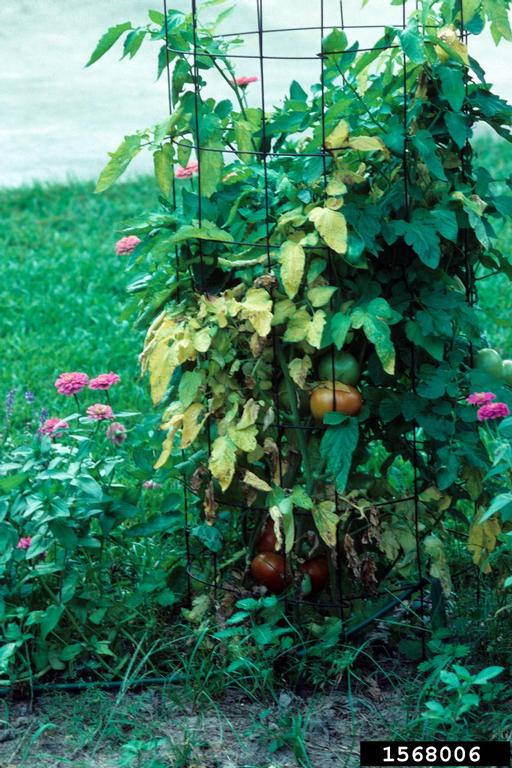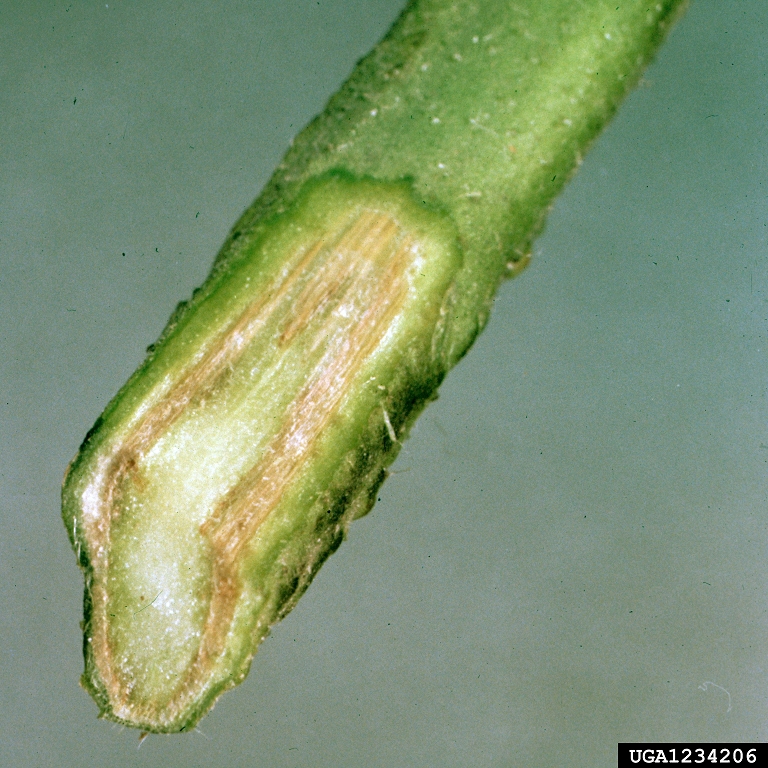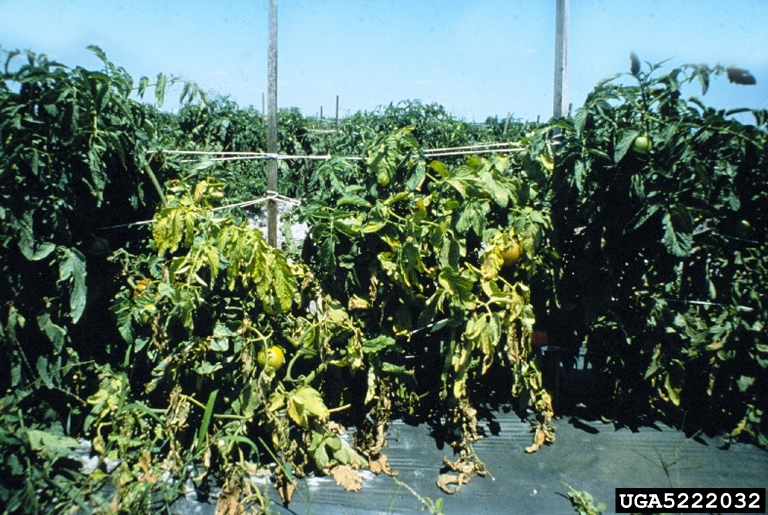
Looking through all the beautiful tomato pictures in a seed catalog, how do you choose the best cultivars for your garden? Every gardener knows nothing is more disappointing than to raise a tomato plant, finally have it loaded with fruit, when suddenly it wilts and dies. One way to prevent this disaster is to choose tomato cultivars carefully with disease resistance in mind.

Prevent Fungal Wilt Diseases
Verticillium and Fusarium wilt are two common diseases effecting tomatoes and other plants in the tomato family such as pepper, eggplant and potato. Both diseases overwinter as fungal spores in garden soil or on infected plant debris not discarded at the end of the previous growing season. Fungicides are not effective at controlling these diseases, so prevention is the key to success.
Verticillium or Fusarium wilt spores enter the tomato plant through the roots. The fungus then grows up into the main plant and throughout the plant’s vascular system, blocking the movement of water and nutrients. As water movement to the leaves stops, they begin to turn yellow and wilt.
Plants can be infected at any stage of growth and at any time during the summer growing season. Young plants may completely wilt and die soon after planting. The first symptoms on older plants appear when leaves, either at the top or bottom of the plant, wilt during the day, and then recover at night. Eventually, infected plants no longer recover at night, but remain permanently wilted and finally die.
Stems of infected plants show brown streaking within the vascular tissues just under the green outer tissue. Infected leaves turn yellow, wilt and die. Unfortunately, there is no cure for fungal wilt diseases, so infected plants should be removed and discarded, but not added to the compost pile.
 Resistant Cultivars
Resistant Cultivars
Choosing resistant cultivars for your garden is one of the best prevention strategies. Look for these abbreviations in plant descriptions or plant tags indicating disease resistance. If no mention is made of disease resistance, assume the plant has no resistance.
- Fusarium – F/FF/FFF, F1, F2, F3 or Fol:1, 2, 3 indicating Fusarium wilt races 1, 2 and 3
- Verticillium – V/Va/Vd. V indicates general resistance to Verticillium species. Va indicates specific resistance to the species V. albo-atrum; Vd indicates resistance to V. dahlia.
As an example, one cultivar may be resistant to Fusarium race 1, but susceptible to race 2, so looking for cultivars with the widest resistance available is always a good option. The same is true for Verticillum.
A great place to start selecting this year’s tomato cultivars is the All-American Selections program; disease resistance is one of the main criteria for choosing each year’s winners. Visit All-America Selections, specifically the “Tomato Winner” pages. Filter plants by their growth habit – determinate, indeterminate and semi-determinate – and check out their disease resistance under the “In the Garden” section of each plant’s description. Many great disease resistant cultivars are available for purchase as seed through mail-order catalogs.
Prefer to buy transplants locally? It’s still a good idea to check out the newest tomato cultivars available through All-America Selections, since many garden centers carry them in spring. Make a list of those to look for at your garden center when you're shopping.
If time doesn’t allow for pre-growing season research, then be sure to check plant tags in the garden center next spring for indication of tomato disease resistance before buying.
Develop a Rotation Plan
Rotation is another method of reducing the effects of fungal wilts in the vegetable garden. Fungal spores can survive many years in the soil, so a long garden rotation schedule of 4-6 years is necessary to provide plants some protection. This means plants in the tomato family would be grown in the garden in the first year, but not again for 3-5 years. At a minimum, a 3-year rotation is recommended for gardens with a history of either Verticillium or Fusarium.
You’re probably thinking, “Whew! Even 3 years, that’s a long time!” But research has shown earlier and more severe infections each subsequent year when a crop is grown in the same location repeatedly.
Limited garden space makes such a long rotation schedule impossible for many home gardeners, and it’s not an effective strategy to move tomato family plants from one corner of a garden to another. If the garden is tilled in spring or fall, plant disease pathogens are spread throughout the entire garden area. In this case, rotation would need to take place between separated beds where the soil isn’t co-mingled.
Container growing, using a peat-based potting soil medium, is a small-scale alternative.
Rotation can be a challenge to accomplish but is well worth the effort. Even a highly resistant tomato cultivar can become infected with Verticillium or Fusarium if disease pressure is very high. This is the usual result when tomato plants are grown in the same plot for many years causing a build-up of fungal spores in the soil.
Now's the time to work on a rotation plan for the crops in your gardens this year and look for vegetable cultivars with the highest disease resistance you can find. A little pre-season prep could provide big rewards in your vegetable garden this summer!
Images
- Browning of tomato vascular tissue by Fusarium wilt. Image from Clemson University - USDA Cooperative Extension Slide Series, Bugwood.org.
- Two Fusarium infected tomato plants with advanced symptoms, flanked by two healthy plants. Image from the Florida Division of Plant Industry, Florida Dept. of Ag and Consumer Services, Bugwood.org.